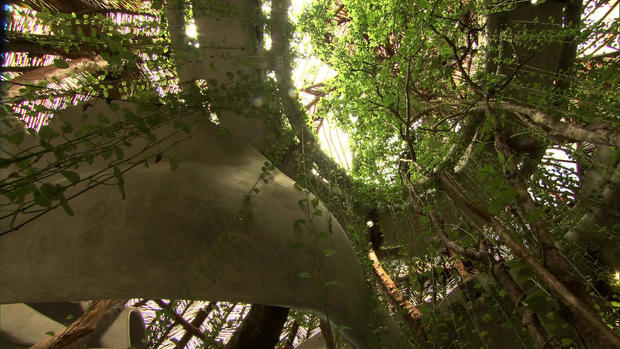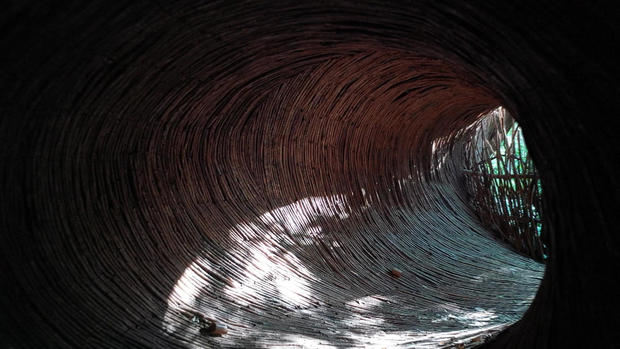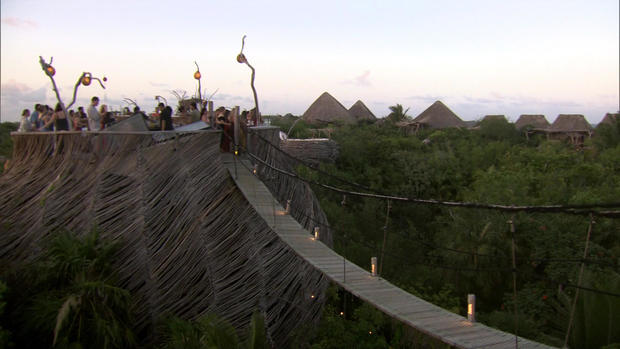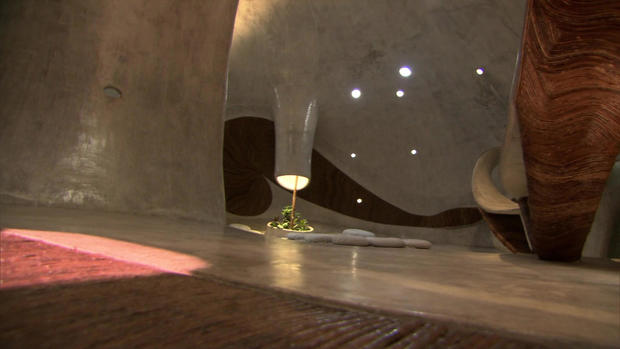Whimsical, living architecture, conjured in the Mexican jungle
Walking into Azulik Uh May, with its winding pathways, cascading vines and asymmetric design, is like entering another world. But the point, says Eduardo Neira, is to feel more connected to ours.
Nature is more than a muse for the self-taught architect, who goes by the single name Roth. "Nature is my school," he said. "You see in the nature there are not square angles, there are no square planets. But in life, we live in square places and we transport in square places and working in square places. So, our mind becomes square."
Correspondent Manuel Bojorquez asked, "You think we've gotten too far away from the natural form?"
"Yes, so much away."
So, when Roth decided to build an artists' community, gallery and home in the jungle near Tulum, Mexico, he enlisted the help of the people who knew the land best: the indigenous Mayans.
The design grew organically, with no blueprints. "We use the ancestral techniques to make everything handmade," he said. "We couldn't bring heavy machines." In fact, trees are an essential element in the design; the buildings were constructed around them. "There are 200 trees living in this house," he said.
"So, no blueprint, no heavy machinery, and you're going with the flow of the jungle, of the trees?" asked Bojorquez. "You really didn't cut one any tree?"
"No, we don't cut any."
Many of the tunnels and walkways are made of bejuco, a sustainable vine that grows in the trees.
The arts community is Roth's latest project, but his original masterpiece is just about 18 miles away, at a beach in Tulum, where over the last decade a small cabana he built has grown into one of the area's most popular resorts: the Azulik. The name is a combination of the Spanish word for blue and the Mayan word for wind.
"Everything was improvised," Roth said. "That's why the hotel is so strange, because it's evolved, like in the nature."
Bridges connect nest-like perches, and guests are encouraged to ditch phones and air conditioning in favor of the ocean breeze. Tourists flock here, even if just for a photo.
Back at the arts community, Roth's goal is to attract and nourish talent, from ceramic artists to locals like Luis Caamal, who know this form of macrame.
Bojorquez said, "I have to say, walking around I feel like I'm a child again, because you're climbing trees and crossing a drawbridge, and people are smiling. It does bring you back to something very …. it's playful."
Roth said, "In nature everything is playful. All the birds are singing, everybody is a celebration. We have to recover this happiness, the celebration of nature."
For more info:
- Azulik, Tulum, Mexico
- Azulik uy May
- Roth Architecture
Story produced by Mark Hooper. Editor: Joseph Frandino.










